Initial situation
Airedale Terrier, 18 weeks old, missing toe.
The dog was presented to the practice for a prophylactic examination and for the right rear limb which was missing a toe. This fell off, probably due to necrosis. On movement, we see that the dog has a conspicuous gait on the right rear.
More precisely, this means that the axis from the hock joint downwards turns inwards and causes a slightly circular gait. The activity of the hindquarters seems to be reduced, it also goes into a left outward stance, at times also into a right outward stance.
Viewed from the front it is noticeable that the mobility of the left shoulder phalanx is altered compared to the right.
Viewed from the side, the forehand appears, at first glance, to be relatively ground covering. The hindquarters sway a little due to the position to the right and left outside, which makes the mobility and activity there seem reduced.
All in all, the changes are only slight; only the limb position at the rear right from the hock down towards the toe is noticeable.

Diagnosis
The diagnosis revealed an altered croup musculature on the right side, furthermore the mobility is different on both sides of the pelvis. Especially the gluteal muscle has a different shape on the right side. The positions of the hind limb are also different. Seen from above, the S-shaped curve of the spine stands out; in front of the pelvis there is a slight left torsion. In the middle, the spine twists and continues to the right.
This is followed by the unevenly positioned shoulders: more turned out on the right side, while the left side appears flatter and more choppy in movement. These are the most important findings.
Apart from this, the position on the left rear side is also altered: The puppy is taking weight there, especially on the third toe, and turns it in to compensate on the right side. We see that the shoulder on the left goes forward in one position: an axial cranial translation. Meanwhile, in the pelvis there is an abaxial translation, i.e. a low position, which is also slightly twisted backwards.
It is likely that the toe fell off due to pressure necrosis, caused by another puppy or the mother. The blood circulation was disturbed by lying on the hindquarters for a long time.
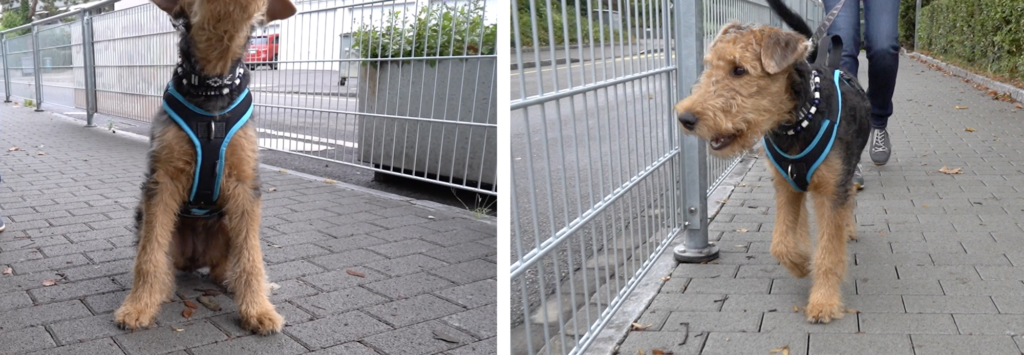
First Functional Movement Measurement with LupoGait®
The first functional movement measurement with LupoGait® reflects the diagnosis. Light blue here represents the initial measurement, dark blue after treatment and rotation of the pelvis.
Especially the stance phase at the back left shows a clear improvement after the rotation of the pelvis. But also the flexion and extension of the forehand could be clearly improved.
This means that the puppy has performed a so-called pullmove, i.e. a pulled movement. This explains the less active hindquarters. Through the treatment, the hindquarters as well as the forehand could be relieved accordingly; the hindquarters could be led into a normal traction.
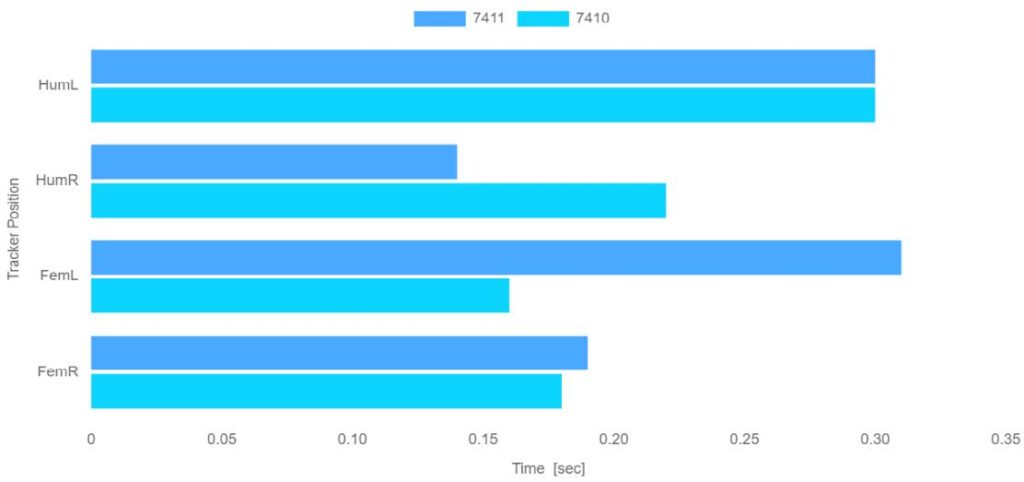
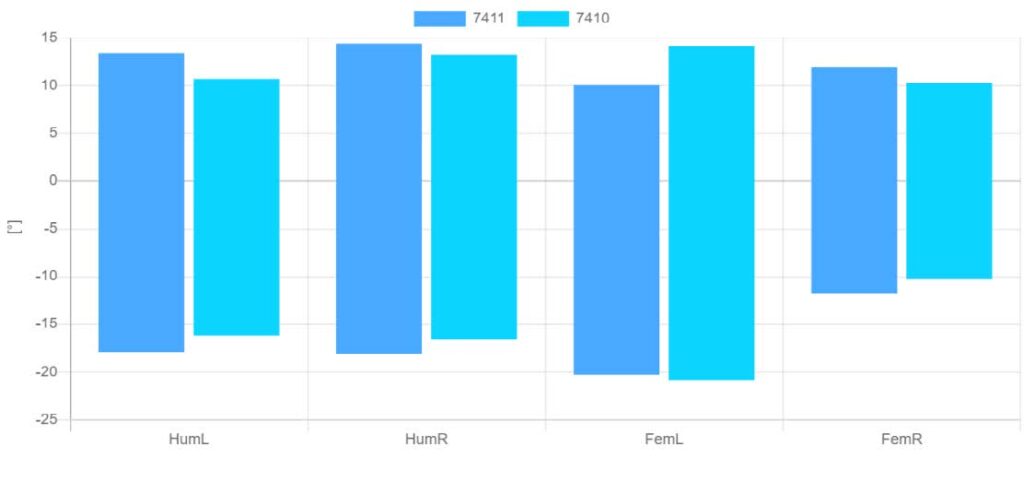
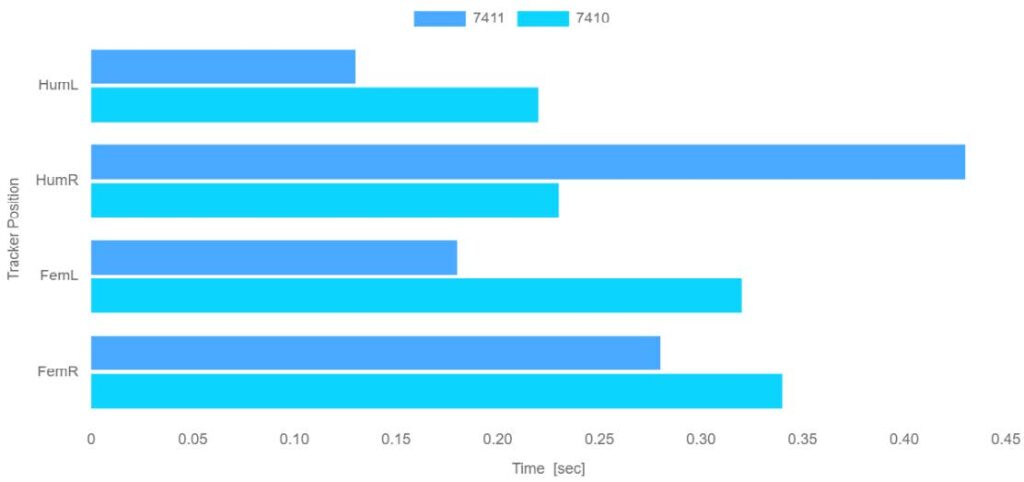
Renewed treatment
As the result was not yet satisfactory, the left shoulder was then manipulated or orthopaedically treated manually so that it was parallel to the right shoulder.
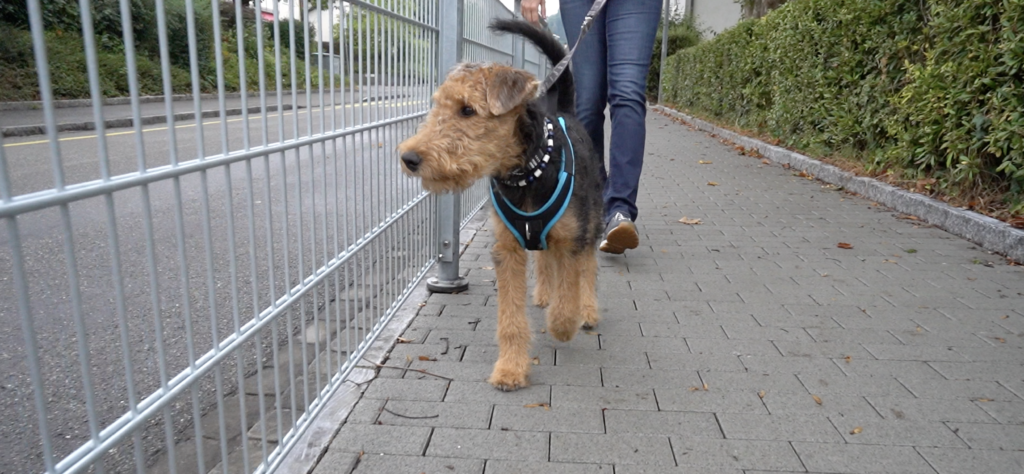
Control measurement with LupoGait®
This led to an increase in the stance phase of both the right and left shoulder, as the control measurement with LupoGait® showed. The stance phase of the hindquarters could be practically normalised. The extension and flexion show an adjustment in this respect: Although the pelvis is manipulated and the shoulder symmetrical, the puppy is still in a compensatory posture on the front left as well as on the back right. This can be remedied by constructive therapy.
The gyroscope readings – in maximum and variance – are now symmetrical, confirming the suspicion of the pull move of the forehand compensating for the hindquarters.
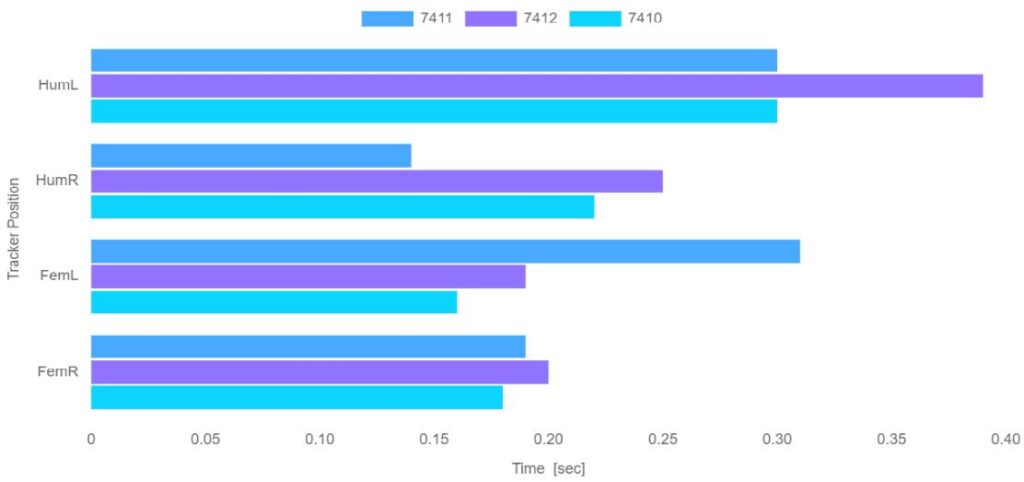
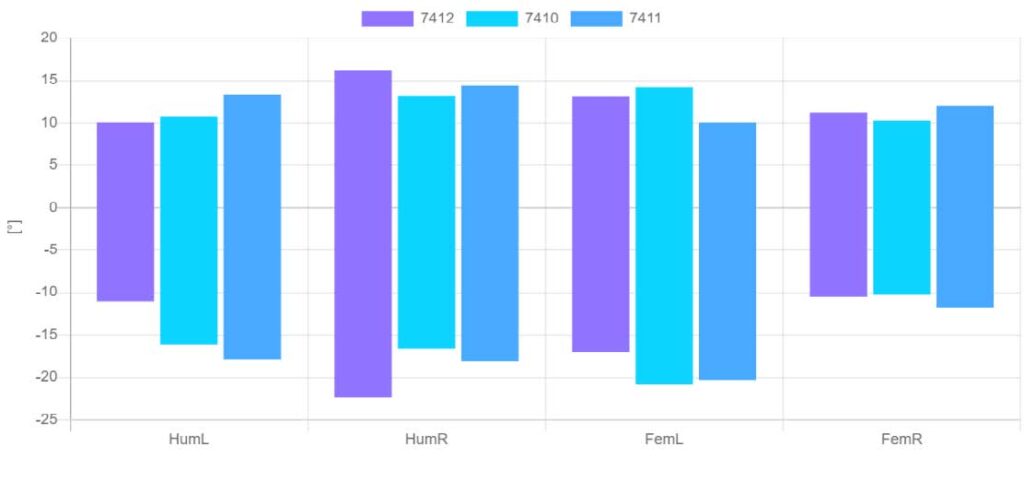
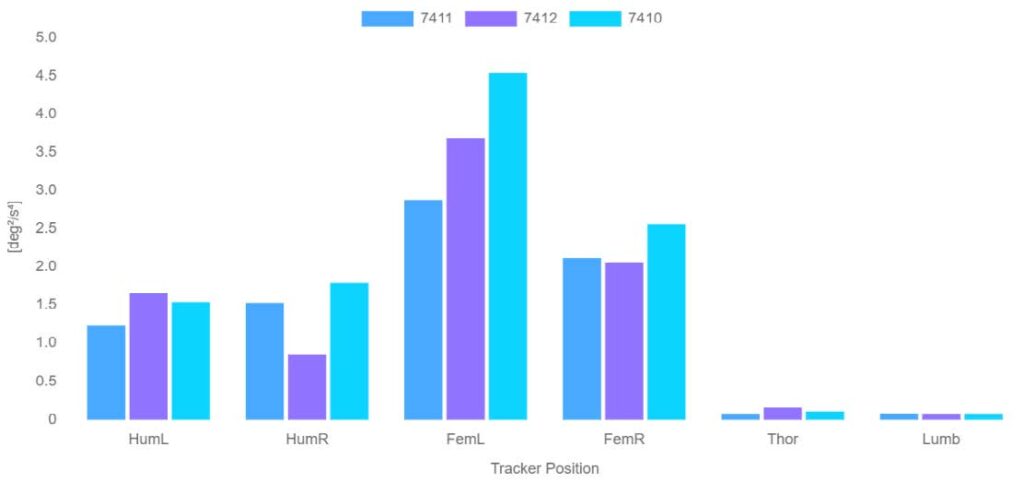
Concluding remarks
Following this consultation, it was noted that the dog had an excessive EIK score. “EIK” refers to the energy intensity coefficient; its increase explains the puppy’s increased growth rate.
The EIK for Airedale Terriers is 650 to 700 grams. At 850 grams in our patient, we ordered a change in diet to avoid growth problems. Already the puppy looks very big, especially compared to his littermates. The dog is fed with barf – we have reduced the meat ration from 80 to 60% and increased the amount of vegetables. We hope that this will regulate the EIK, which we will be able to check in a control examination in three weeks.
Watch the case of Daisy also as a video:
